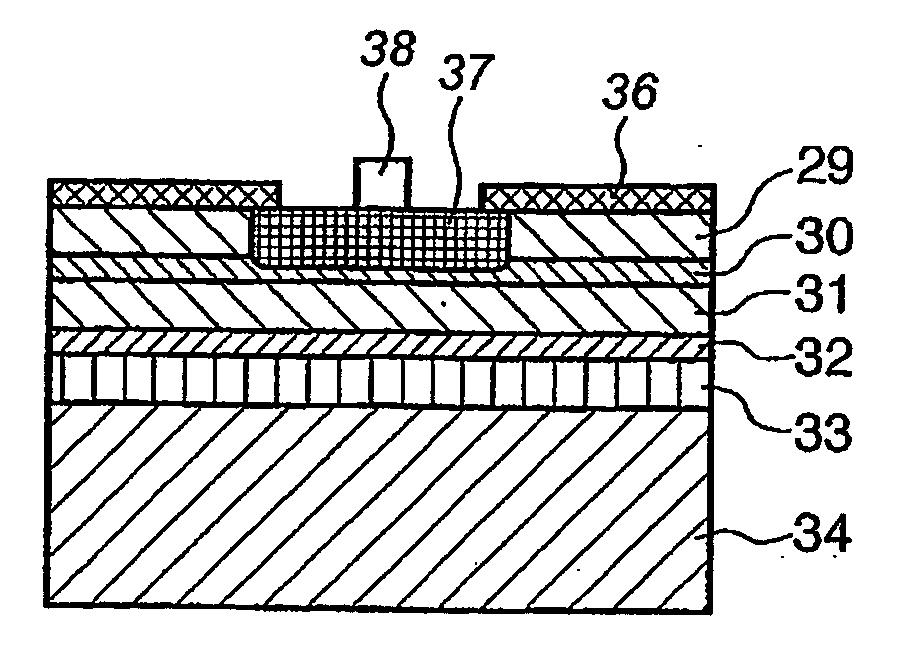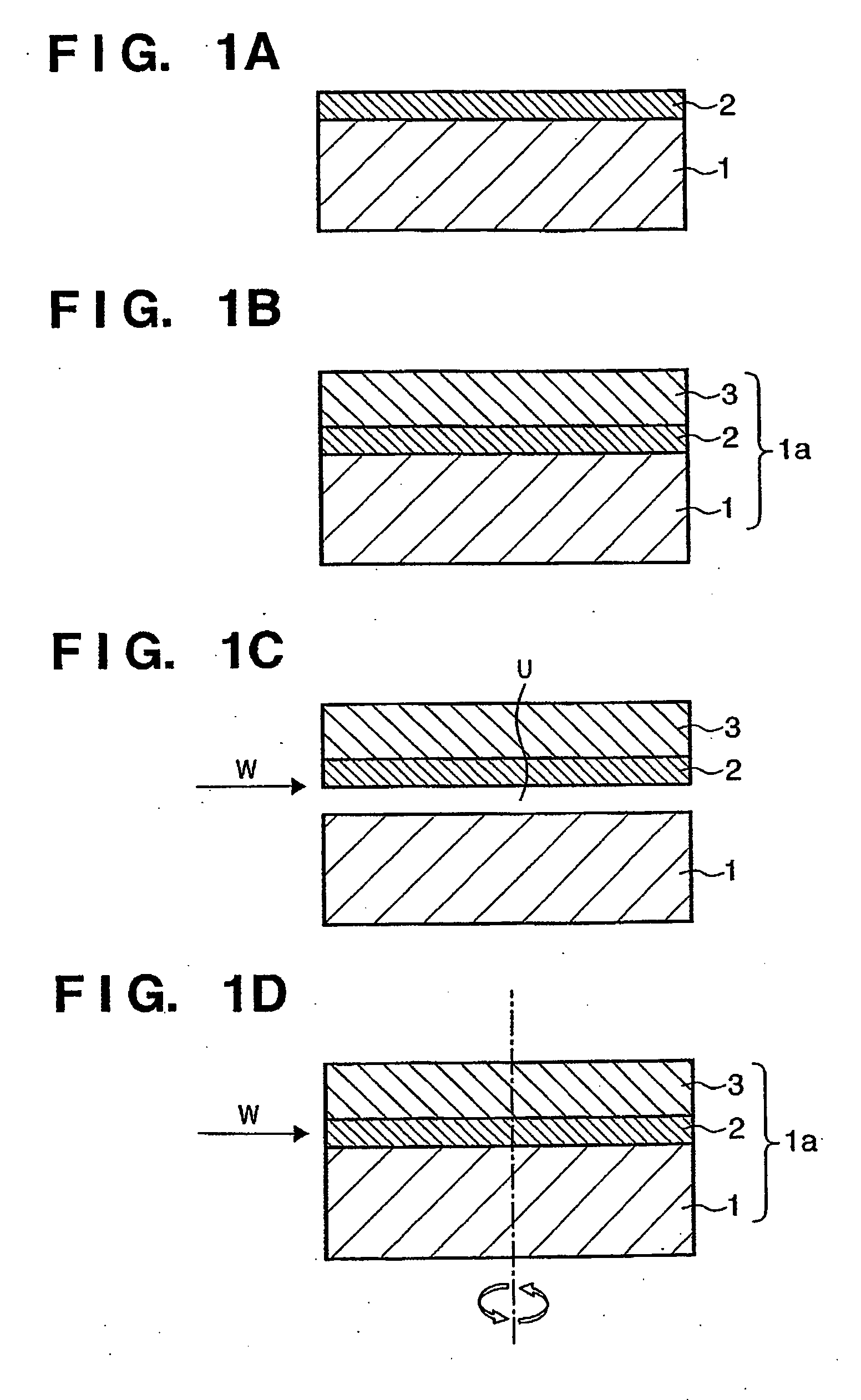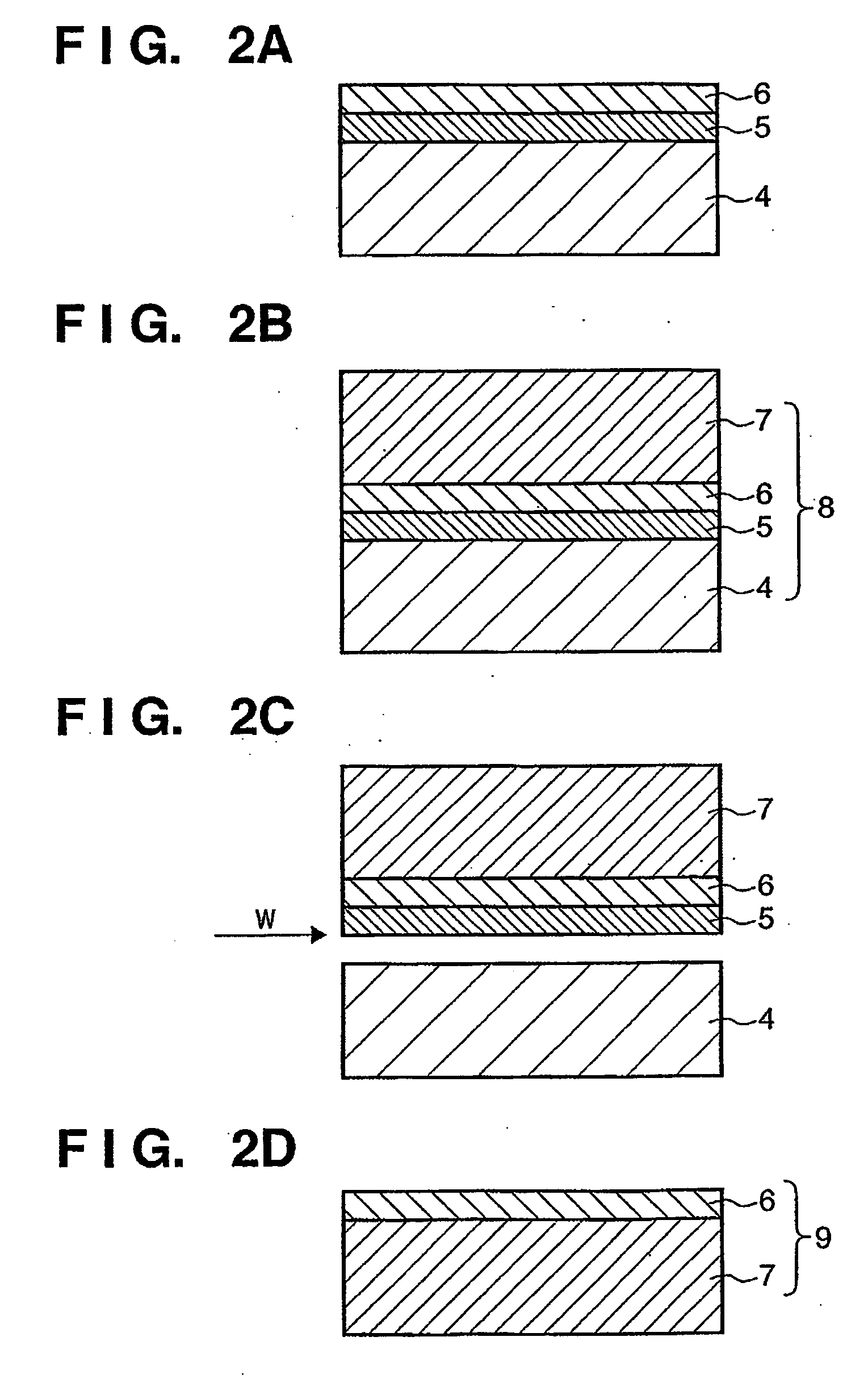Semiconductor film manufacturing method and substrate manufacturing method
- Summary
- Abstract
- Description
- Claims
- Application Information
AI Technical Summary
Benefits of technology
Problems solved by technology
Method used
Image
Examples
first embodiment
[0047] As the first embodiment of the present invention, a method of separating a semiconductor film from a substrate or a method of manufacturing a semiconductor film separated from a substrate will be described below. FIGS. 1A to 1D are views schematically showing a method of separating a semiconductor film from a substrate or method of manufacturing a semiconductor film separated from a substrate.
[0048] In the separation layer forming step shown in FIG. 1A, on a seed substrate 1 such as a Ge substrate having crystallinity, a semiconductor film having a lattice constant different from the seed substrate 1, and for example, a separation layer 2 made of AlAs or InGaAs is hetero-epitaxially grown.
[0049] In the semiconductor film forming step shown in FIG. 1B, a semiconductor film 3 made of GaAs is formed on the separation layer 2 to form a composite member 1a including the substrate 1, separation layer 2, and semiconductor film 3. At this time, a semiconductor de...
second embodiment
Substrate Manufacturing Method
[0064] As the second embodiment of the present invention, a method of manufacturing a substrate having a semiconductor film will be described below. FIGS. 2A to 2D are views schematically showing a method of manufacturing a substrate having a semiconductor film.
[0065] In the step shown in FIG. 2A (separation layer forming step and semiconductor film forming step), on a first substrate (seed substrate) 4 such as a Ge substrate having crystallinity, a semiconductor film having a lattice constant different from the first substrate 4, and for example, a separation layer 5 made of InGaAs is hetero-epitaxially grown. A semiconductor film 6 made of GaAs is formed on the separation layer 5.
[0066] In the bonding step shown in FIG. 2B, the first substrate 4 is bonded to a second substrate (handle substrate) 7 such as an Si substrate while setting the semiconductor film 6 inside to form a composite member composite substrate) 8. In this bonding, when a metal fi...
third embodiment
Semiconductor Device Manufacturing Method
[0074] As the third embodiment of the present invention, a method of manufacturing a semiconductor film having a semiconductor device or a substrate will be described below. FIGS. 3A to 3E are views schematically showing a method of manufacturing a semiconductor film having a semiconductor device or a substrate.
[0075] In the step shown in FIG. 3A (separation layer forming step and semiconductor film forming step), on a first substrate (seed substrate) 10 such as a Ge substrate having crystallinity, a semiconductor film having a lattice constant different from the first substrate 10, and for example, a separation layer 11 made of InGaAs is hetero-epitaxially grown. A semiconductor film 12 made of GaAs is formed on the separation layer 11.
[0076] In the semiconductor device forming step shown in FIG. 3B, a semiconductor device 13 such as an LED is formed in the semiconductor film 12. Typically, in the semiconductor device forming step, instea...
PUM
 Login to View More
Login to View More Abstract
Description
Claims
Application Information
 Login to View More
Login to View More - R&D
- Intellectual Property
- Life Sciences
- Materials
- Tech Scout
- Unparalleled Data Quality
- Higher Quality Content
- 60% Fewer Hallucinations
Browse by: Latest US Patents, China's latest patents, Technical Efficacy Thesaurus, Application Domain, Technology Topic, Popular Technical Reports.
© 2025 PatSnap. All rights reserved.Legal|Privacy policy|Modern Slavery Act Transparency Statement|Sitemap|About US| Contact US: help@patsnap.com



